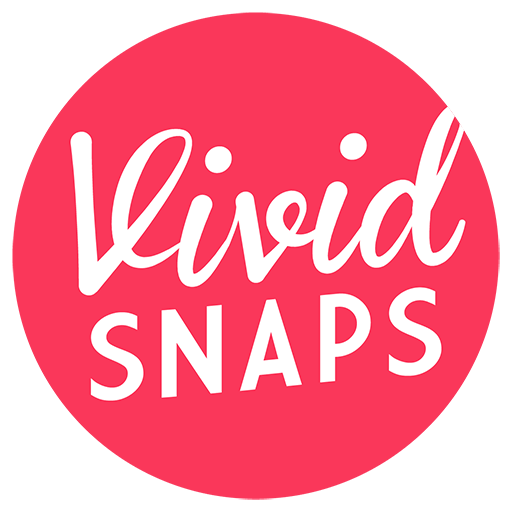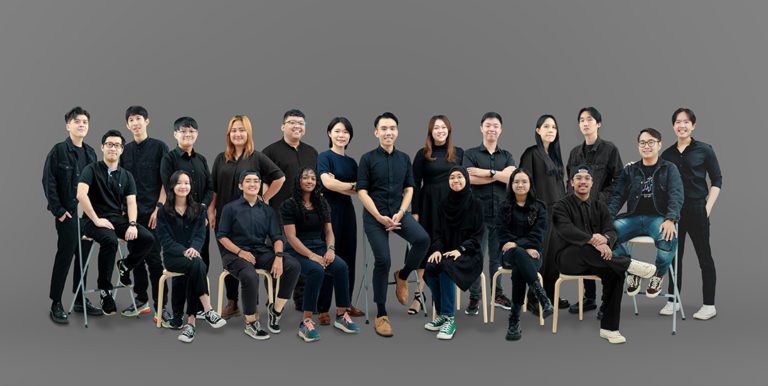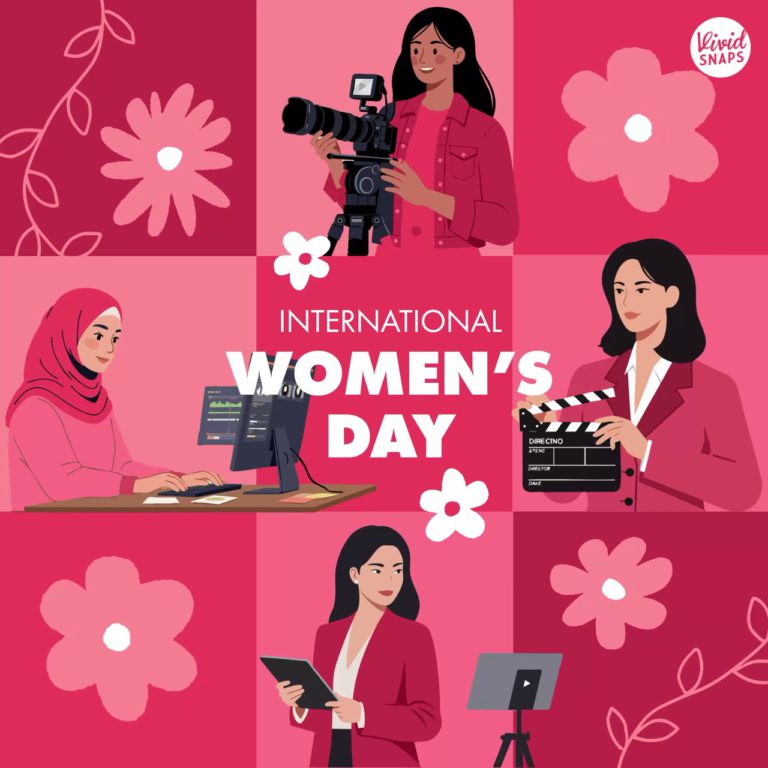Green screen video production has become an essential tool for corporate storytelling, allowing businesses to create dynamic, high-quality videos with limitless creative possibilities. Whether you need to simulate an executive news briefing, transport your team to an international stage, or create a virtual environment that aligns with your corporate branding, green screen technology makes it possible.
At our centrally located studio in Kallang Place, we provide a fully-equipped green screen studio along with a professional video production team. We handle everything from pre-production to post-production, ensuring that your vision is brought to life with precision and high production value.
Why Choose Green Screen for Your Corporate Video?
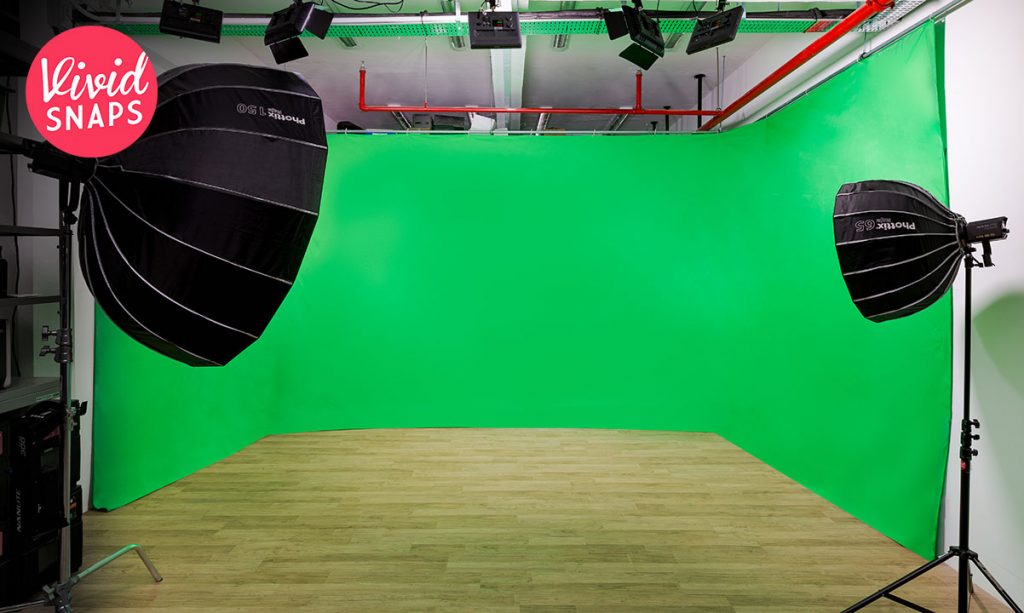
Green screen technology allows corporate clients to create videos in a controlled environment while achieving diverse visual effects. Here are some key benefits:
- Versatility – Green screen is ideal for brand storytelling, corporate communications, product showcases, recruitment videos, and more.
- Customisable Backgrounds – Replace the green screen with any backdrop, whether it’s a professional office setting, a virtual stage, or a branded digital environment.
- Cost-Efficiency – No need to travel to multiple locations; everything can be filmed in our studio and edited seamlessly.
- Consistent Lighting & Quality – A controlled studio setting ensures professional lighting, audio quality, and a smooth filming process.
Studio Multiple Camera Setup
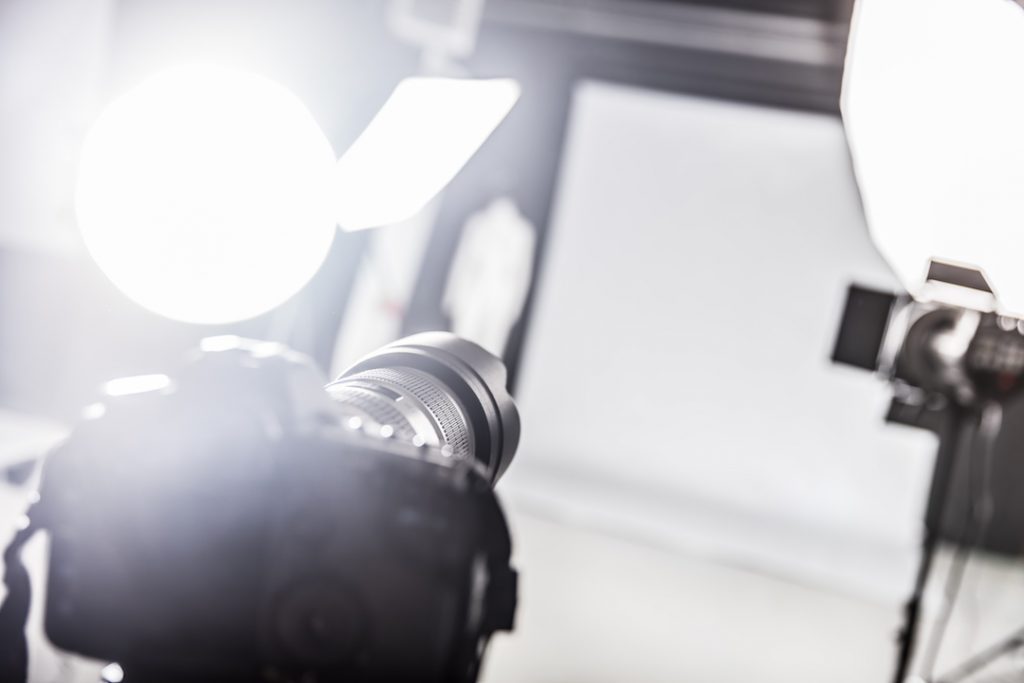
As simple as a video might be, having just one camera angle may not be the most ideal for a few different reasons.
A static, un-moving video of someone’s face for however long can be boring at times. This is when cutting to a second angle for a few seconds can help to make your video have a bit more dynamic.
There are also many times that a presenter makes a mistake or fumbles over a few words when speaking. If you edit a few seconds out of the middle of a video but stay on the same camera angle, a jump cut will be very obvious. If you cut between two different cameras, it can come across as a deliberate change of anglez, and the jump cut is not as noticeable!
Multiple angles are also great for interview videos with multiple people. One camera can be capturing the interviewer and interviewee(s), while the other can be a close-up angle panning to whoever is talking. This way, you can have a variety of shots and also keep the focus on only the person talking when they’re sharing something significant. Using one camera to zoom and pan between a wide shot of everyone and individual close-ups is also an option that can give you a variety of angles. But doing this means you might miss out some interactions between the interviewer and interviewee(s) and their reactions, which can help to liven up your video. Using multiple cameras is the best way to ensure that you capture all the footage you want and gives you the freedom to pick and choose your clips when you’re editing.
Our Green Screen Studio in Kallang Place
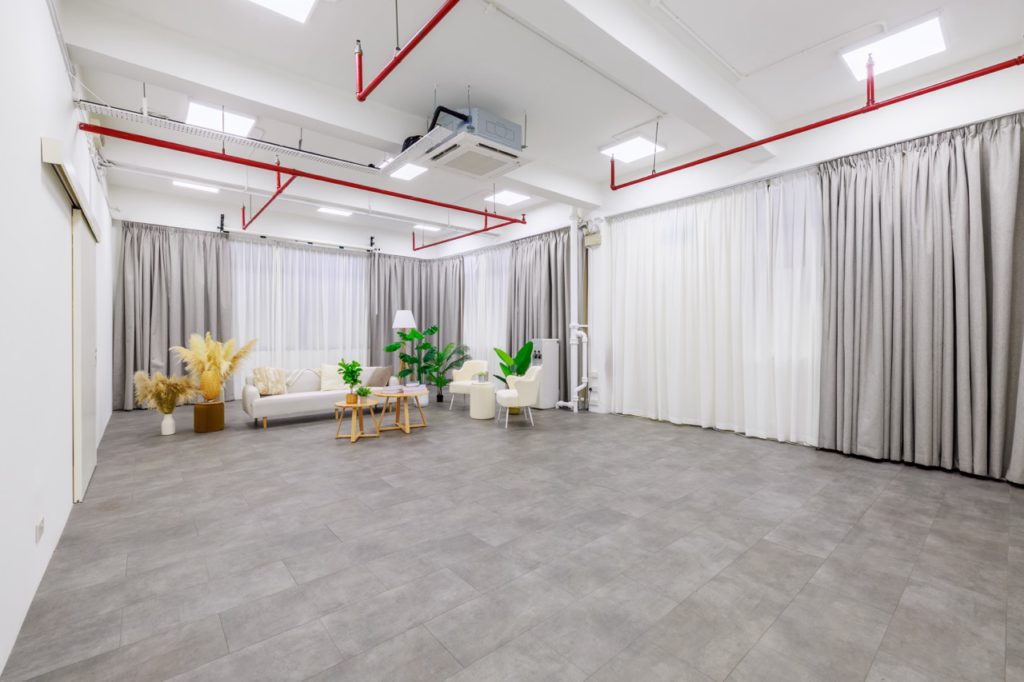
Our studio space, measuring approximately 600 square feet, is centrally located at Kallang Place, just a 10-minute walk from Bendemeer MRT. The studio offers ample open-air parking, wheelchair accessibility, and full air-conditioning for a comfortable filming experience.
Key features of our studio include:
- A quiet and private filming environment
- Green screen backdrop for seamless background replacement
- High-quality video production equipment and crew
- Comfortable furniture such as single sofa, 3-seat sofa or high stools.
- Professional lighting and audio equipment
End-to-End Video Production Services
When you engage our team for your video production, you are not just hiring a studio—you are getting a full-fledged production team that takes care of everything from start to finish.
Our comprehensive services include:
- Pre-Production – Conceptualisation, scriptwriting, storyboarding, logistics planning, location sourcing, and talent sourcing.
- Production – Professional filming with high-quality equipment, lighting setup, and on-set direction.
- Post-Production – Editing, visual effects, background replacement, sound design, and colour grading.
This ensures a seamless process where you only need to focus on your message, while we handle the technical execution.
AI Avatar Filming and Advanced Production Capabilities
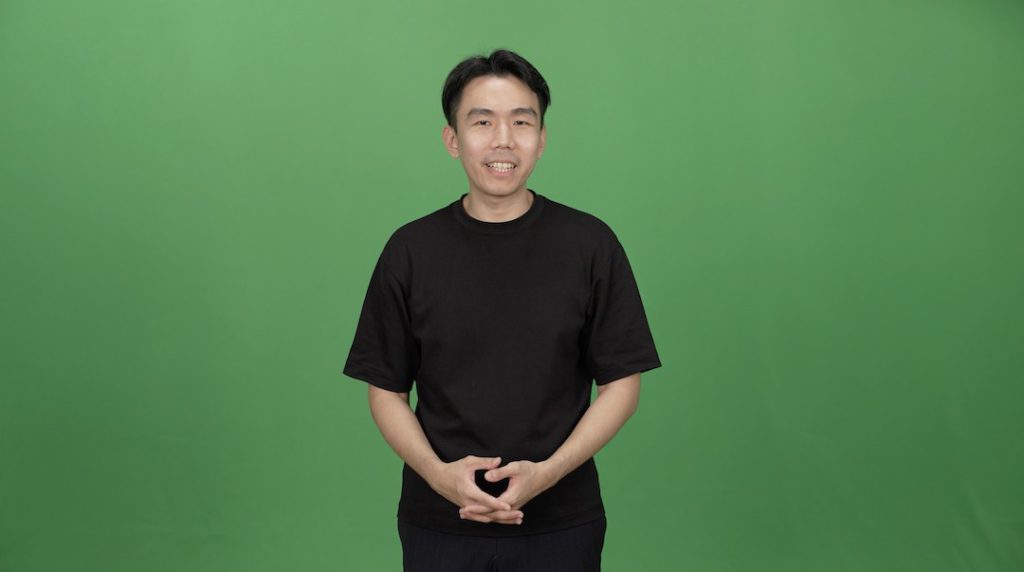
In addition to traditional green screen filming, we also provide AI avatar filming services. We have worked with platforms like Synthesia to create digital avatars that can deliver professional corporate messages. This technology is useful for businesses that require scalable, multilingual video content while maintaining brand consistency.
Common Green Screen Video Use Cases
Green screen video production is used across various corporate applications, including:
- Corporate Branding Videos – Create polished, professional videos that reflect your company’s identity.
- Executive Announcements & Town Halls – Deliver internal communications in a visually engaging format.
- Training & E-Learning Videos – Produce interactive training content with custom virtual backgrounds.
- Marketing & Promotional Videos – Showcase products or services with high-quality visuals.
- Virtual Events & Webinars – Present speakers in dynamic, immersive settings.
Green Screen Studio with Newscaster Scene
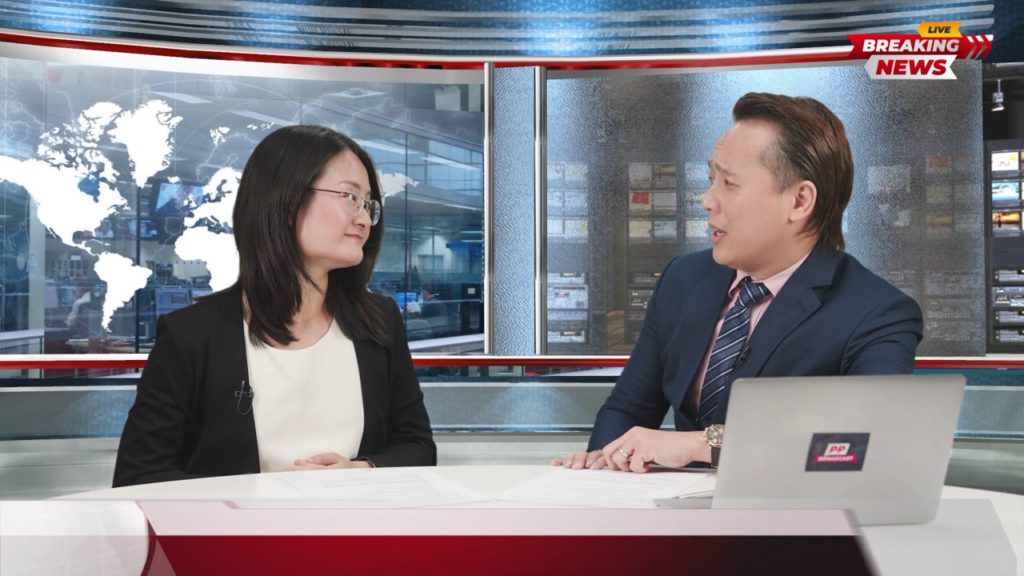
We recently filmed a newscaster scene with two subjects in our green screen studio, creating a professional and dynamic setting for corporate messaging. These novelty scenes add a fresh and engaging touch to corporate communication videos, making them more memorable and impactful. Whether it’s a simulated newsroom, a panel discussion, or a creative branded message, incorporating unique scenes into corporate videos helps capture audience attention and enhance engagement.
Green Screen Studio with Evening Scene
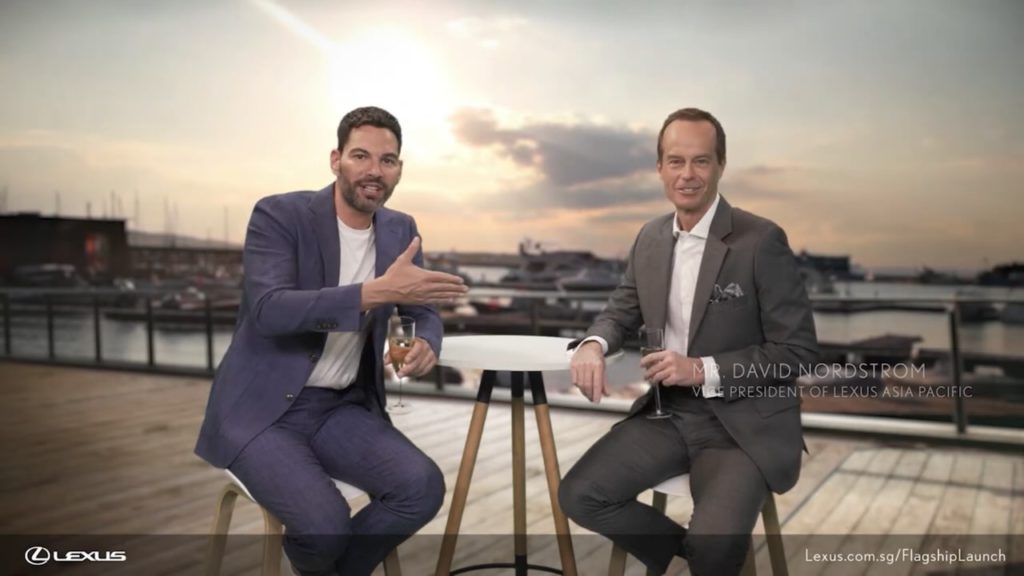
Using green screen technology, we can simulate an evening scene at the marina without ever leaving the studio. By incorporating a pre-recorded evening marina backdrop and adjusting the studio lighting to mimic the warm glow of sunset or the soft shimmer of city lights reflecting off the water, we can create an immersive and visually stunning setting. This approach allows for control over the atmosphere, ensuring the right mood and aesthetic for your corporate video while maintaining a seamless and professional production process.
Green Screen Studio with Teleprompter
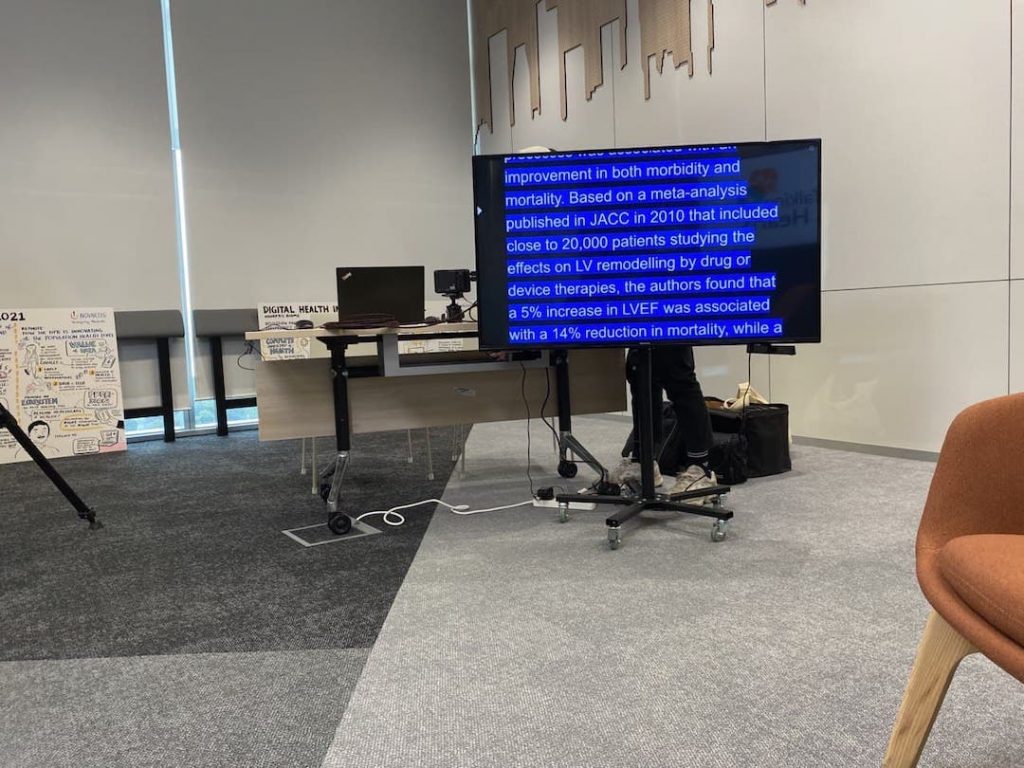
A teleprompter for your video production saves your talents from the difficult task of having to memorise their scripts. And helps to reduce production time as you can avoid having to do multiple takes if your talents forget their lines.
A teleprompter is a device that prompts the presenter with a visual of their script or presentation and these are 2 popular types that Vivid Media offers: Glass camera mounted teleprompter and TV teleprompter.
The glass camera mounted teleprompter works with text being bounced off special glass placed in front of the camera lens. While the presenter reads off the glass screen, they’re still looking directly into the lens, so they can maintain eye contact with their audience. This type of teleprompter is often used for pre-recorded speech or presentation videos.
A TV teleprompter is useful for interview recordings. The TV teleprompter can be placed across from the interviewee and behind the interviewer. This is so that even as the speaker reads off the screen, it looks like they are still looking at the interviewer. Since TV teleprompter screens are much bigger than camera mounted teleprompters, they can be placed further away from the speakers so that they aren’t visible in the shot.
Both types of teleprompters have their pros and cons, and our professional video production team can help guide you to choose what will work best for your production!
Frequently Asked Questions (FAQ)
1. Is your studio available for rental?
Yes! Our studio is available for both rental and as part of our video production services. If you engage our team for video production, we can waive the rental fee in most circumstances.
2. How long does the pre-production process take?
Pre-production typically takes 2-4 weeks, depending on the complexity of your project. This includes concept development, scripting, and logistical planning.
3. Can we use the studio for filming non-green screen scenes?
Absolutely. While we specialise in green screen productions, our studio is versatile and can accommodate other filming setups as well.
4. Do you provide talent or presenters for the video?
Yes, we can assist with talent sourcing, including professional presenters, voice-over artists, and actors, based on your requirements.
5. What kind of support do you offer for scriptwriting and storyboarding?
Our team can assist with scriptwriting, storyboarding, and overall video conceptualisation to ensure a clear and engaging narrative.
6. Can we film AI avatar videos in your studio?
Yes, we have experience in AI avatar filming, including working with Synthesia for corporate video applications.
7. What is included in the post-production process?
Post-production includes video editing, background replacement, motion graphics, sound design, and colour grading to enhance the final output.
8. Do you provide teleprompters for presenters?
Yes, we can provide teleprompters and teleprompter operator to help presenters deliver their lines smoothly and professionally.
9. Can you accommodate last-minute filming requests?
We recommend booking in advance, but we do our best to accommodate urgent filming needs based on availability.
10. What industries do you typically work with?
We work with a wide range of industries, including finance, healthcare, technology, education, and more.
Green Screen Studio Filming for Corporate Customers
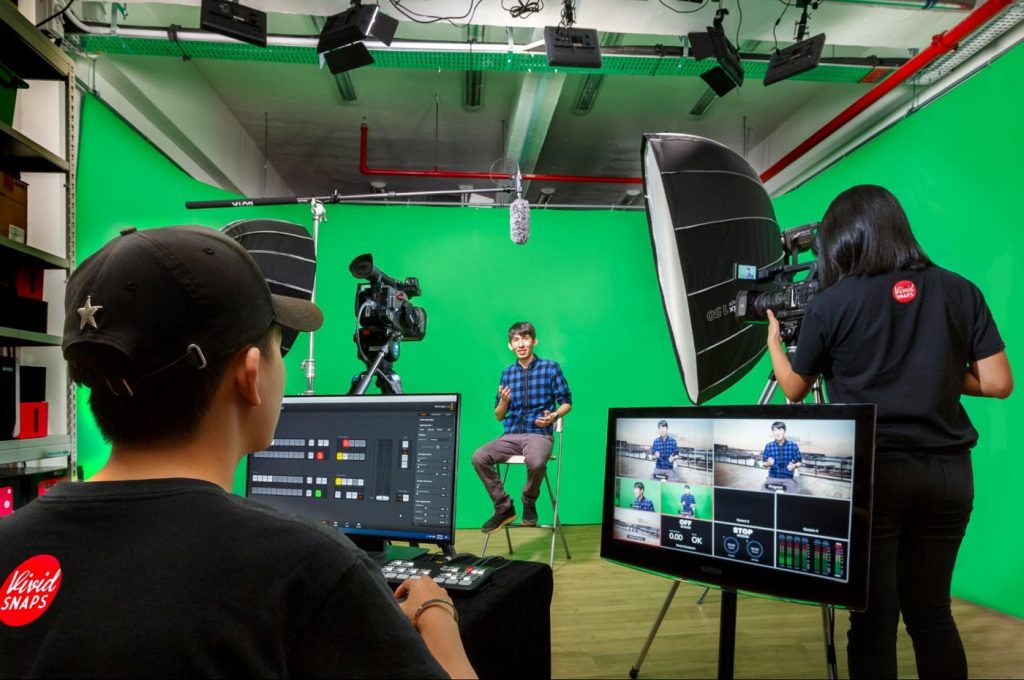
We work with corporate and organisational clients to deliver professional corporate communication videos. Filming is commonly done on-location in your office or at our green screen studio. For long speeches, we can provide a teleprompter to make it less stressful for your filming subjects.
